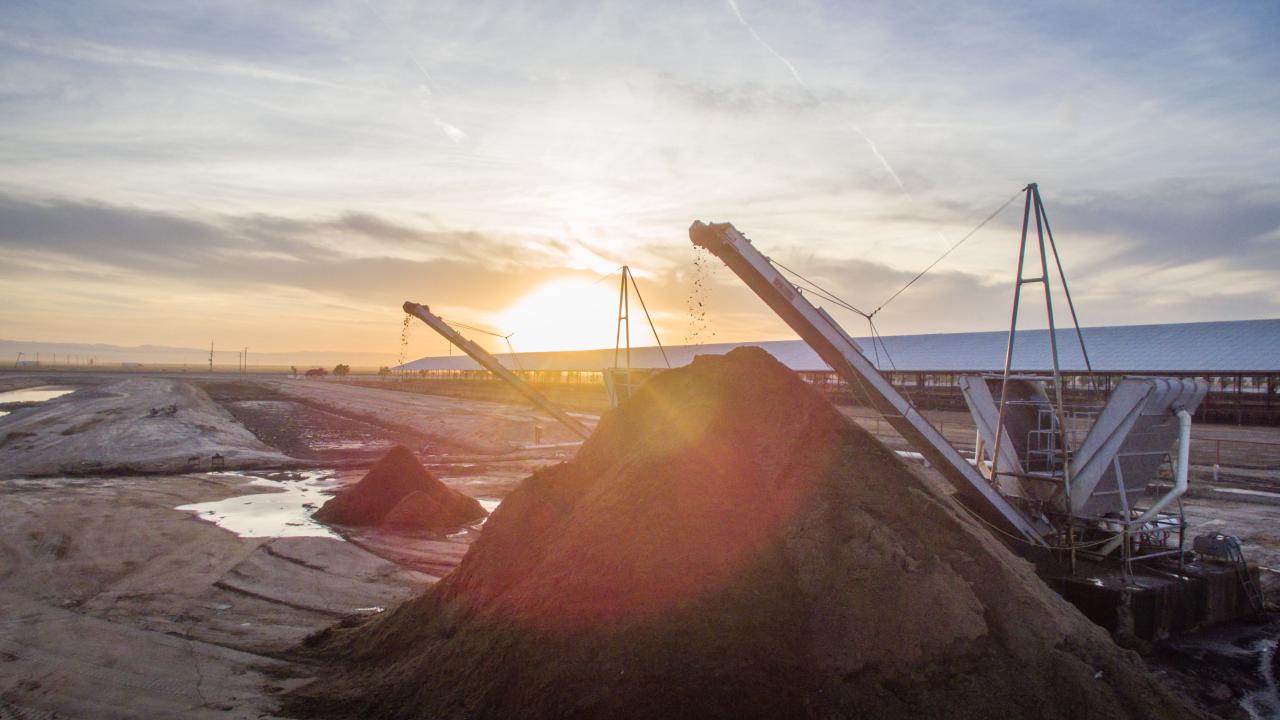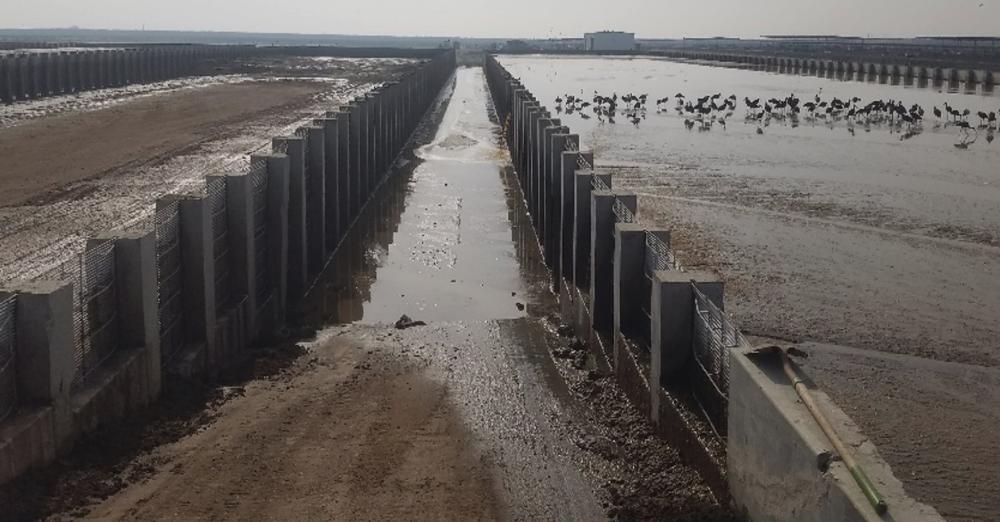
Study by UC Davis, CLEAR Center Researchers Points to Promise of Anaerobic Digestion and Alternative Manure Management in Reducing Methane for Dairy Sector
Quick facts:
- California is the lead dairy producing state in the United States.
- Anaerobic settling basins and lagoons, which are the most common manure storage systems in the state, give rise to methane.
- To achieve sustainability on dairy farms and to comply with state regulations for air and climate pollutants, producers are turning to new methods such as anaerobic digestion and alternative manure management technologies.
- Government incentive programs are partially funding these technologies for eligible dairies in the state, a key to their adoption and success.
In an ongoing effort to find practical ways of reducing methane emissions on California’s prolific dairies, scientists, farmers and lawmakers are looking closely at how cows’ manure is managed, an effort that has many stakeholders optimistic about new technology.
It’s also the reason behind “Anaerobic Digestion and Alternative Manure Management Technologies for Methane Emissions Mitigation,” a new paper from researchers at University of California, Davis in the Biological and Agricultural Engineering and the CLEAR Center, which is housed in the College of Agricultural and Environmental Sciences. Scientist from the California Department of Food and Agriculture also contributed to the study.
Published by the peer-reviewed journal Atmosphere and appearing in an issue devoted to managing emissions resulting from livestock production, the article examines the design and operations, effectiveness and economics of the most common technologies employed in Californian dairies in reducing methane emissions. The technologies studied include anaerobic digesters, mechanical separators, compost-bedded pack barns, manure vacuuming followed by drying and weeping walls.
Frank Mitloehner, an international expert in animal agriculture and air quality expert in the UC Agriculture and Natural Resources Cooperative Extension, and director of the CLEAR Center, calls the work “a truly bright spot on the greenhouse gas horizon,” both for its promise at reducing methane emissions and the fact that it in California, manure management is a collaborative effort between many sectors.
“What we are doing in California with anaerobic digesters, for example, should be a model for tackling greenhouse gas emissions in the future. We have industry, academia, government, agriculture and others coming together to find workable solutions to global warming and a sustainable food supply,” he said. “Two of the most important issues our world is facing.”
Anaerobic digestion refers to the method of using microorganisms to convert organic materials into biogas, a gaseous mixture of mainly CH4 and CO2 in the absence of oxygen. On dairies, manure lagoons are covered airtight, trapping methane and preventing it from escaping into the atmosphere. Another advantage of the system includes being able to pump the enclosed methane from the tank to those in the transportation industry who can use it as biofuel.
California launched its Dairy Digester Research and Development Program in 2015, awarding competitive grants to partially fund anaerobic digesters and reduce dairies’ methane emissions. The Alternative Manure Management Program (AMMP), began in 2017, resulted in competitive grants to dairy farmers to implement technologies other than anaerobic digesters for manure management. According to the California Department of Food and Agriculture, by the end of 2022, the 233 state-sponsored projects under the DDRDP and AMMP had succeeded in wiping out 28% of the emissions that must be cut by 2030.
Digesters will not work on every dairy and farmers will turn to other manure management solutions to reduce emissions. In this study, researchers examine the operation, design, effectiveness and economics of an array of manure management technologies, reviewe government incentive programs and even make recommendations on how to improve new technologies.
Other approaches discussed are:
- Mechanical separators, which remove manure solids before the waste is stored, a practice that could reduce methane emissions by lowering the organic loadings to lagoons.
- Weeping walls, a system with a settling basin with a large dewatering surface area. Compared to mechanical separators, weeping walls tend to have lower energy requirements, minimum equipment requirements.
- Compost-bedded pack barns are housing systems for dairy cows. Because the animals walk and lie on the compost, the manure surface becomes compacted, and oxygen exchange is limited, reducing manure decomposition and thus, methane emissions. In addition, these barns can increase cows’ comfort by giving them an open-bedded pack area for resting and exercise.

The authors also cover technologies not commonplace in California, including aeration, centrifugation and forced hot-air drying.
With anaerobic digesters representing what is perhaps the most effective tool in the quest to reduce methane emissions on dairies, and alternative manure management also showing promise, the authors advocate for continued research.
“Digesters aren’t our only tool to reduce greenhouse gas emissions on farms, but they’re our best and most available,” Mitloehner said. “We can’t slow down now. The need to reduce emissions is too important.”
Authors of the paper include Hamed M. El Mashad, Tyler J. Barzee, Roberta Brancher Franco, Ruihong Zhang, Stephen Kaffka and Dr. Mitloehner. To read the paper, visit Atmosphere online.
Media Resources
Joe Proudman at jproudman@ucdavis.edu
